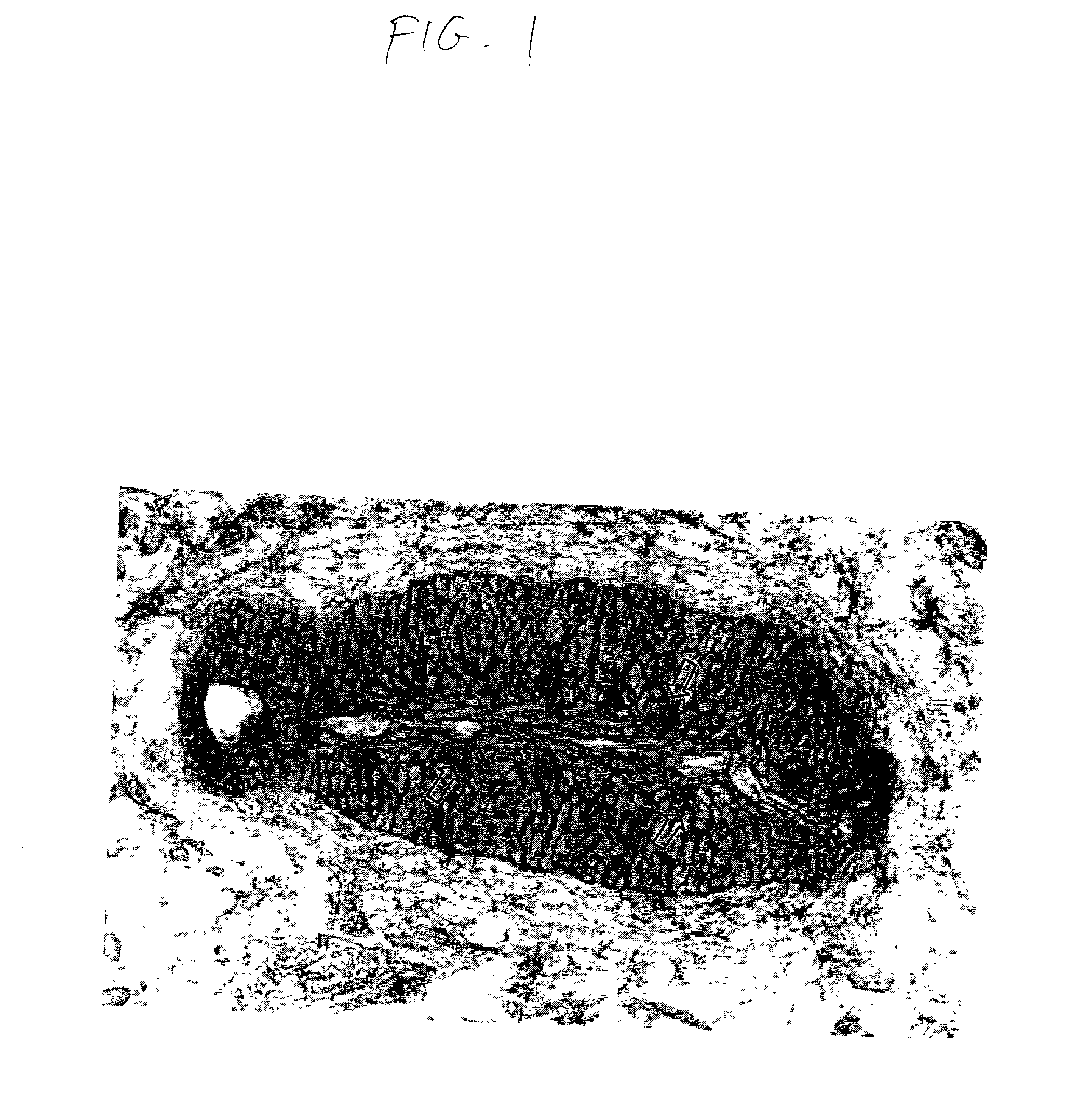T1R taste receptors and genes encoding same
a technology of t1r taste receptor and genes, applied in the field of newly identified mammalian chemosensory g proteincoupled receptors, can solve the problem of lack of information about ligand-receptor recognition
- Summary
- Abstract
- Description
- Claims
- Application Information
AI Technical Summary
Benefits of technology
Problems solved by technology
Method used
Image
Examples
example 1
hT1R3
[0242]The hT1R3 genomic DNA is provided below as SEQ ID NO 1 and SEQ ID NO 2 with predicted coding sequences (cds) shown in boldface. The break between the 5′ and 3′ contigs is shown as elipses (‘ . . . ’). The hT1R3 predicted cds are described in SEQ ID NO 3. Finally, a preferred, predicted hT1R3 amino acid sequence is provided as SEQ ID NO 4, using the one-letter code for the amino acids.
[0243]
hT1R3 genomic DNA - 5′ contig (SEQ ID NO 1)AGCCTGGCAGTGGCCTCAGGCAGAGTCTGACGCGCACAAACTTTCAGGCCCAGGAAGCGA(SEQ ID NO: 1)GGACACCACTGGGGCCCCAGGGTGTGGCAAGTGAGGATGGCAAGGGTTTTGCTAAACAAATCCTCTGCCCGCTCCCCGCCCCGGGCTCACTCCATGTGAGGCCCCAGTCGGGGCAGCCACCTGCCGTGCCTGTTGGAAGTTGCCTCTGCCATGCTGGGCCCTGCTGTCCTGGGCCTCAGCGGCTGGCCTCCGCAGCCGGACACGGCCCAGCAGCCCTGTGTGCACCAGGTACAGAGGTGGGACGGCCTGGGTCGGGGTCAGGGTGACCAGGTCTGGGGTGCTCCTGAGCTGGGGCCGAGGTGGCCATCTGCGGTTCTGTGTGGCCCCAGGTTCTCCTCAAACGGCCTGCTCTGGGCCGCCATGGTCACCGGCAAGTTCTTCAGCTTCTTCCTCATGCCCCAGTGGGGCGCCCCCCACCATCACCCACCCCCAACCAACCCCTGCCCCGTGGGAGCCCCTTGTGTCAGGAGAATGCh...
example 2
rT1R3 and mT1R3
[0244]Segments of the rat and mouse T1R3 genes were isolated by PCR amplification from genomic DNA using degenerate primers based on the human T1R3 sequence.
[0245]
The degenerate primers SAP077 (5′- CGNTTYYTNGCNTGGGGNGARCC-3′; SEQ ID NO 5) and SAP079 (5′- CGNGCNCGRTTRTARCANCCNGG-3′; SEQ ID NO 6) are complementary tohuman T1R3 residues RFLAWGEPA (corresponding to SEQ ID NO 7) andPGCYNRAR (corresponding to SEQ ID NO 8), respectively.
[0246]The PCR products were cloned and sequenced. Plasmid SAVI 15 carries a cloned segment of the mouse T1R3 gene, and SAVI 18 carries a segment of the rat gene. These sequences, shown below, clearly represent the rodent counterparts of human T1R3, since the mouse segment is 74% identical to the corresponding segment of human T1R3, and the rat segment is 80% identical to the corresponding segment of human T1R3. The mouse and rat segments are 88% identical. No other database sequences are more than 40% identical to these T1R3 segments.
[0247]
SA...
example 3
Cloning of rT1R3
[0248]The mT1R3 and rT1R3 fragments identified above as SEQ ID NOs 9 and 11 were used to screen a rat taste tissue-derived cDNA library. One positive clone was sequenced and found to contain the full-length rT1R3 sequence presented below as SEQ ID NO 13. Sequence comparison to the mT1R3 and rT1R3 partial sequences and to the full-length hT1R3 sequence established that this cDNA represents the rat counterpart to hT1R3. For example, the pairwise amino acid identity between rT1R3 and hT1R3 is approximately 72%, whereas the most related annotated sequence in public DNA sequence data banks is only approximately 33% identical to rT1R3.
[0249]
rT1R3 predicted cds (SEQ. ID NO. 13)ATGCCGGGTTTGGCTATCTTGGGCCTCAGTCTGGCTGCTTTCCTGGAGCTTGGGATGGGGT(SEQ ID NO 13)CCTCTTTGTGTCTGTCACAGCAATTCAAGGCACAAGGGGACTATATATTGGGTGGACTATTTCCCCTGGGCACAACTGAGGAGGCCACTCTCAACCAGAGAACACAGCCCAACGGCATCCTATGTACCAGGTTCTCGCCCCTTGGTTTGTTCCTGGCCATGGCTATGAAGATGGCTGTAGAGGAGATCAACAATGGATCTGCCTTGCTCCCTGGGCTGCGACTGGGC...
PUM
| Property | Measurement | Unit |
|---|---|---|
| Tm | aaaaa | aaaaa |
| temperature | aaaaa | aaaaa |
| temperature | aaaaa | aaaaa |
Abstract
Description
Claims
Application Information
 Login to View More
Login to View More - R&D
- Intellectual Property
- Life Sciences
- Materials
- Tech Scout
- Unparalleled Data Quality
- Higher Quality Content
- 60% Fewer Hallucinations
Browse by: Latest US Patents, China's latest patents, Technical Efficacy Thesaurus, Application Domain, Technology Topic, Popular Technical Reports.
© 2025 PatSnap. All rights reserved.Legal|Privacy policy|Modern Slavery Act Transparency Statement|Sitemap|About US| Contact US: help@patsnap.com



